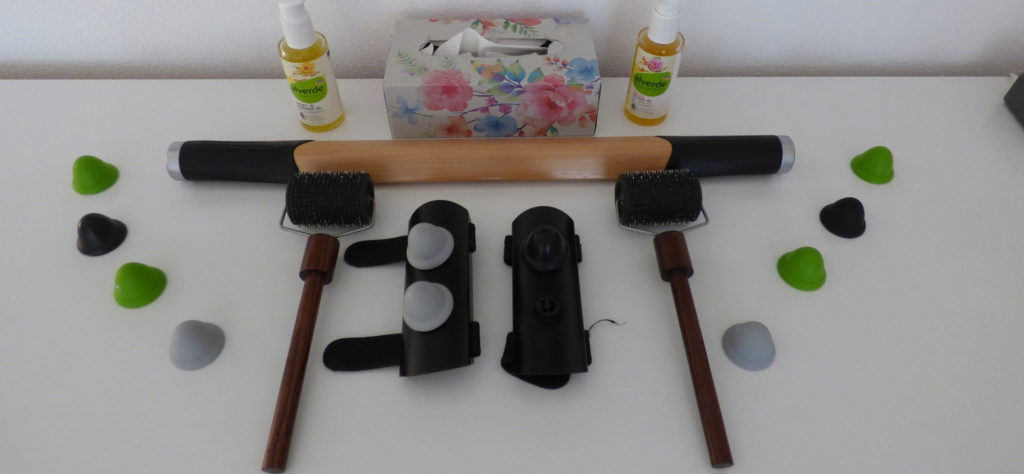
Interdisciplinary Fascia Therapy (IFT)
IFT is an evidence-based therapy method that has special application for all chronic and acute musculoskeletal pain. In addition to the fascia and the musculature, the therapy also addresses the body’s nervous system. This can often also improve psychological tension and imbalance. The IFT treatment is a combination of different therapy methods and is particularly sustainable in its effect, because the patient can learn with the help of his therapist to apply the method regularly to himself and thus to maintain the beneficial results permanently.
Holistic view of your musculoskeletal system
Before and during each therapy session, we look closely at your individual physical aspects. IFT is specifically about the fasciae, which make up an elementary part of the musculoskeletal system. At the same time, many body structures work together with the fasciae and must therefore always be considered as well. A holistic view therefore includes the following structures:
- Musculature
- Bones
- Connective tissue
- Joints and cartilage
- and much more

You would like to get advice?
What is the fascia?
The fascia is a network of connective tissue that runs throughout the body. The fascia form a kind of protective cover for muscles and organs and are a fundamental part of the human musculoskeletal system. Mobility and protection against injuries begin with a healthy and conductive fascial network.
What is the nervous system?
The nervous system is the control center of the body. All human movements and actions are controlled and regulated by nerve impulses. The nerve tracts in the brain and spinal cord form the central nervous system. This communicates commands to the peripheral nervous system, which consists of all other nerves in the body.
How do adhesions and hardenings in the fasciae develop?
A weakened fascial system usually manifests itself through painful hardening and adhesions of the fasciae, which can manifest themselves in chronic pain or limitations of the musculoskeletal system. The causes for this can be of different nature. In addition to congenital connective tissue weaknesses, numerous aspects of individual lifestyle can also be responsible. These include:
How healthy are your fasciae? Learn more with us.
How does a session of Interdisciplinary Fascial Therapy work?
After a consultation and precise examination of the problem areas, the device-supported fascia therapy can be used. The therapy uses special tools to release and loosen the clotted and/or hardened fascia on different parts of the body with the help of microvibrations. A great advantage of the IFT is that after appropriate professional training, patients can also carry out the treatment themselves..
Why and how should fascial tissue be treated?
The fascia can harden and stick together as a result of everyday movement patterns, excessive physical exertion, incorrect eating habits and also advancing age. Evidence-based IFT can be helpful to counteract this process, to stay physically fit and to live a flexible and pain-free life in the long term.
When and why is ist important to treat the nervous system ?
The nervous system is very worthy of protection, since a lot of pain can be avoided and damage to the nervous system is very difficult to treat. Therefore, treatment is strongly recommended, especially for initial but also for advanced problems that can be attributed to the nervous system, in order to prevent things from getting worse. Interdisciplinary Fascia Therapy primarily has a positive effect on the fascia network. However, since fascia, muscles and the nervous system always work together, an improvement in health problems that can be attributed to the nervous system can often be observed.
What is the nervous system?
The nervous system includes all nerve cells in the human body and is responsible for the perception and the processing of stimuli and the control of reactions. All human movements and actions are thus controlled by nerve impulses. The nerve pathways in the brain and spinal cord together form the central nervous system. This constantly exchanges information with the peripheral nervous system, which consists of all other nerve cells in the body.
What are the aims of Interdisciplinary Fascia Therapy?
In addition to positive lifestyle changes, IFT supports healing processes of the musculoskeletal system throughout the body. Competitive athletes among others use IFT to prevent injuries, support or accelerate healing processes and stay mobile. So if you feel disturbed by problems and pain in your musculoskeletal system, IFT can be the sustainable solution for you to live permanently pain-free and improve your quality of life.
The treatment methods described here and on further pages originate from empirical medicine. The majority of these established, medical therapy methods have not yet been sufficiently scientifically validated according to the principles of evidence-based medicine (orthodox medicine). In particular, randomized, controlled studies or comprehensive meta-analyses do not yet exist. A success of the empirical medical therapy forms cannot be guaranteed in every treatment case.

